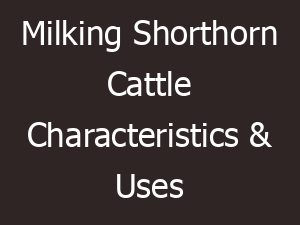The Belgian Blue cattle are a breed of domestic beef cattle from Belgium which are raised mainly for meat production, and also pretty good for the production of milk.
It is gaining popularity as a beef cattle breed throughout the world and can be found mainly in Brazil, Canada, Europe, New Zealand and United States.
The breed is named so mainly because of their typically blue-grey mottled hair color, although their color can vary from white to black.
It is also known by some other names such as Race de la Moyenne et Haute Belgique, Blanc-Bleu Belge (French), Belgian White and Blue Pied, Belgian Blue-White, Belgian White Blue, Blue and Blue Belgian.
Hyper-sculpted, Extremely lean and ultra muscular physique of the Belgian Blue cattle is termed, ‘double-muscling.
The double muscling phenotype of the breed is a heritable condition resulting in an increased number of muscle fibers (hyperplasia), instead of the normal enlargement of individual muscle fibers.
This particular trait is shared with another cattle breed known as Piedmontese cattle.
Both Belgian Blue and Piedmontese breed have an increased ability to convert feed into lean muscle. And this causes these particular two breed’s meat to have an increased tenderness and a reduced fat content.
The Belgian Blue cattle were actually originated during the nineteenth century in central and upper Belgium. It was developed form crossing local cattle breeds with a Shorthorn cattle breed from the United Kingdom.
It is also possible that the Charolais cattle were cross-bred as well. The Belgian Blue cattle were a dairy cattle breed first and used for both milk and meat production.
But the modern beef breed was developed by Professor Hanset in the 1950s, who was working at an artificial insemination center in Liege province.
The breed’s characteristic gene mutation was maintained through linebreeding to the point where the condition was a fixed property in the Belgian Blue breed.
The breed was first introduced to the United States by Nick Tutt in 1978. Currently the breed is used for both milk and meat production. Read more information about the breed below.
Belgian Blue Cattle Characteristics
The Belgian Blue cattle are a large animal with rounded outline and prominent muscles. Coloration of the animals can range from black, blue roan, white or a combination of these color.
The red color is present in some genotypes. Their back, shoulder, loin and rump are heavily muscled. Their skin is fine, rump is sloping, back is straight and tail set is prominent. They have very strong and fine legs.
Average body height of the Belgian Blue bulls vary from 145 to 150 cm, and about 140 cm for the cows.

The mature cows on average weight between 850 and 900 kg. And average live body weight of the mature bulls vary from 1100 to 1250 kg, and some animals can reach as much as 1300 kg. Photo and info from Wikipedia.
Uses
Belgian Blue cattle are actually a dual-purpose animal. They are good for both milk and meat production.
Special Notes
The Belgian Blue cattle are famous and noted for their impressive muscling which is commonly referred to as “double muscling”. They are noted for their excellent temperament, high fertility, easy calving, good mobility, structure and high feed efficiency for fattening.
They are sturdy animals and do very well in almost all climates. They are excellent foragers and food converters. The breed is very good for meat production.
Their meat is of same flavor quality level as the Angus cattle. Their meat is debatably tender, but with about 16 percent less marbling than other meat cattle breeds of it’s kind.
Their meat is less in fat, and fat cover is only around half the level measured in it’s counterparts. They have excellent meat to bone ratio than other breeds which is good for producing 20 percent more meat.
The Belgian Blue cattle are also used as a dairy breed as well. The cows are pretty good for the production of milk.
The cows on average can produce about 4,000 kg of milk per lactation. Their milk is of average quality containing about 3.48 percent fat content and about 3.23 percent of protein.
However, review full breed profile of the Belgian Blue cattle in the following chart.
| Breed Name | Belgian Blue | |
| Other Name | Also known by some other names such as Race de la Moyenne et Haute Belgique, Blanc-Bleu Belge (French), Belgian White and Blue Pied, Belgian Blue-White, Belgian White Blue, Blue and Blue Belgian. | |
| Breed Purpose | Dual-purpose (milk and meat) | |
| Special Notes | Well adapted to native climates, very good for meat production, very hardy, good for milk, easy calving, short gestation period, excellent temperament, good mobility, good structure, high degree of conformity, hyper-developed muscling, good size, high feed efficiency for fattening, good fertility | |
| Breed Size | Large | |
| Bulls | 1100-1250 kg | |
| Cows | 850-900 kg | |
| Climate Tolerance | All climates | |
| Coat Color | Can range from black, blue roan, white or a combination of these color | |
| Horned | No | |
| Milk Yield | Good | |
| Rarity | Common | |
| Country/Place of Origin | Belgium |







Want to start a new herd. Will this breed good for starting?
Not sure where are you from? Please ask any local expert. Good luck!